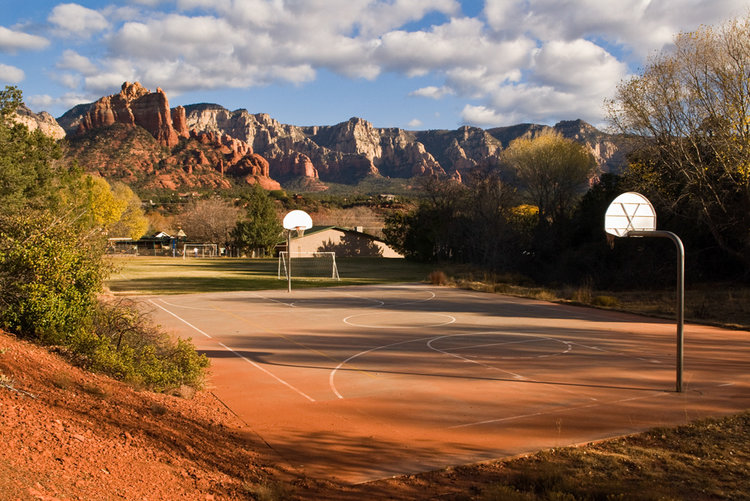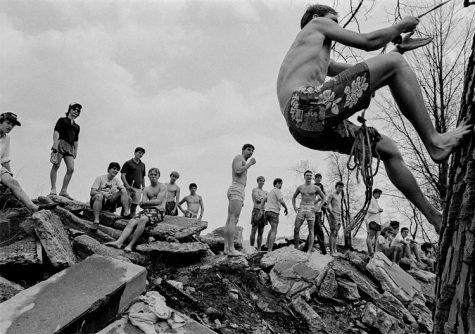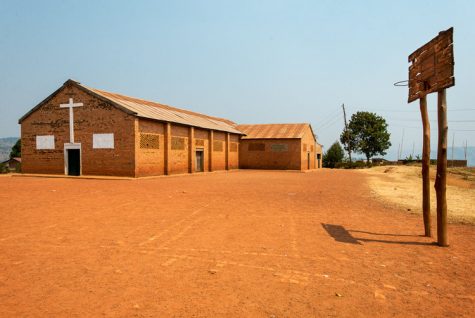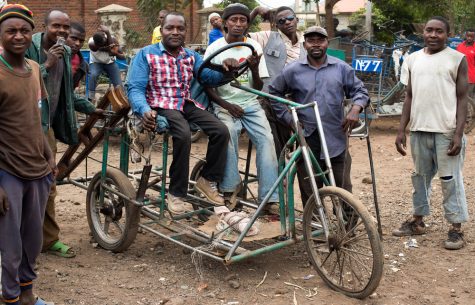Why did you join the Black and White?
I joined the Black and White to report and learn more about the Whitman community.
What's your favorite song?
The Final Countdown


March 23, 2020
Bill Bamberger, a North Carolina native, has spent his entire adult life photographing various cultural and social issues of our time in the United States and around the world. His photographs have appeared in numerous publications, including Aperture, Doubletake, Harper’s, The Washington Post Magazine, Fortune and The New York Times Magazine. His work has also been featured in exhibits at the Yale University Art Gallery, the Smithsonian Institution’s National Museum of American History and the North Carolina Museum of Art.
Responses have been edited for length and clarity.
Bill Bamberger: When I was younger, I went to the University of North Carolina and I was interested in becoming a writer. I loved writing the first drafts, but I wasn’t good at the editing and all of the work it takes to create a polished final piece, and frankly, I didn’t enjoy it.
I discovered photography during that time, and I thought “Wow, what a great parallel opportunity,” because with photography, like writing, you can tell stories that are intimate and narrative in form about the world we live in.
Right out of college, I began a career as a photographer. In those days, I did film and printing, and I found every bit of it engaging. Today, we do our work mostly with a digital camera, but I still enjoy the editing, the printmaking and every piece of it. I’ve always been interested in projects that tell stories in narrative form, but also work that deals with society and social issues of our time. With each of my projects, I hope to advance a cause or make a statement about something that’s important to the world we live in.
BB: None. My parents imagined that I would go into law or business because I was a good student and had a lot of opportunities. When I was in college, my parents went through a difficult divorce. Because they had their own struggles, they sort of lost track of what I was doing, and I thought to myself, “I’m just going to choose something that I really love,” and never looked back. In a way, a difficult circumstance became fortuitous for me. I had no training in the arts and no idea that I wanted to be a photographer. I took a couple of classes at UNC and that sort of paved the way.

BB: A project of mine called “Boys Will Be Men” captured the life and coming of age for teenagers at two high schools: one in Flint, Michigan and a private boarding school in Deerfield, Massachusetts. This project looks at two very different schools: one being urban and large, having about 65% – 70% African American and 10% – 15% Hispanic students, with many others nationalities and cultures mixed in; the other being a private boarding school in New England that was primarily white, affluent and rural.
With these projects, I spent a year at Deerfield and another at Flint, going to the schools and actually teaching, but mostly photographing the students. I was interested mostly in the boys, and doing a piece about gender, coming of age and what it is to be a man in our culture — something that I’ve wrestled with. This project looked at that difficult coming of age in a time where these young men discuss what it is to be male, the kind of men they’d like to grow into and the lives they imagine for themselves. I see that as a social issue in this era, where we have terms like “toxic masculinity” for men who haven’t really been good citizens and stewards of power and have done some damage.

BB: The project is so interesting in terms of society. We have this unique sport of American origin, yet it is morphed in every place you see hoops. They’re so similar because the design of a basketball court is very straightforward, but renditions can be remarkably different.
In 2009, I photographed a hoop in Sedona, Arizona, on a beautifully built court with a striking landscape in the background. You see the red clay of the earth ascending onto the court, and yet the court holds its own in a powerful way, speaking to the quiet affluence of the area. There’s a soccer goal in the background, nicely kept school buildings and a beautiful, idyllic scene.
In 2013, I took a photograph at a very similar basketball court at a church in Kinihira, Rwanda. There too, there are mountains in the background that you see, not as striking and hazier. The court is integrated into the earth, and the court is red clay. The backboard is made of common lumber, the faded rim looks like it was custom welded, and the posts were hanji trees, likely from the community. This speaks to some disparity, obviously with a wealthy, remote part of Rwanda and a nice area in Arizona. Each of these courts speaks to issues like wealth disparity and the design sensibility of the community — how the community creates a court, with what materials, in what setting and what surrounds the court. It’s a project about sport, but also in a much larger sense about society: the similarities and differences between one community and another.
BB: I usually work on one project at a time, although there’s always some overlap. With “Hoops,” I did it over the course of the past 15 years and built it into other projects. When I was in Rwanda, I was doing projects about modern day life and a portrait project about what Rwandans were really like, because we just know them in terms of the horrific genocide that took place 25 years ago. Sometimes, I’ll build a project around my life, or around where I am, but more often, I like to work on one thing at a time. With all my work, it’s a case of where I usually choose the project, I get an idea, I test it, and then bring it to fruition. It’s a mix of self design projects and projects that come to me. It’s also a mix of projects like Hoops that I can do on and off over the course of many years, and projects like Boys Will Be Men, where for a year I go and do nothing but photograph for an entire year.

BB: It’s a real privilege to be able to go to different places and to be able to photograph. Photography is a really wonderful means of connecting with people, particularly with the Hoops project. For all of my work, I asked people for permission to photograph, which is a big deal, because a lot of times people travel to foreign countries and photograph without asking permission, and it sometimes offends people. I think it’s particularly common in Africa where we come in as outsiders, sometimes very privileged and more affluent, and feel like we can take pictures. Whether I was in Africa, Italy, or Guatemala — regardless of my language skills — I could ask to photograph someone’s court or the school. If they didn’t understand, I would take out my phone, where I have a whole portfolio of images and show people photographs of the hoops and different courts around the world, and it wouldn’t take long before they’d understand what I was asking permission to do and they’d say “of course, go ahead.” It’s not just the experience of visiting places and seeing the different cultures, but also working there and understanding how to navigate it. Sharing images from other parts of the world is a way of connecting us, and that’s been a pleasure to do everywhere I have visited.
BB: It really depends on the project. With basketball landscapes, I walk onto the court like I’m doing a portrait. I look for what is interesting about this place, whether it is the backboard, court, landscape, etc. I try to capture a feeling for that place — I try to tell a story that’s true and engaging. I step onto the court, and imagine what kind of approach I’m going to take. And then it just varies depending on the place.
With portraits, I try to capture a central element of who we are as an individual. When I’m preparing to do a portrait, I think of the expression that defines that person. With the landscape work, I pay close attention to lighting and exposure. Think of the times you’ve been in a remarkable landscape that’s either beautiful or just compelling because the culture is so different, and you feel it so strongly. How do I communicate that with a single image?
BB: It’s totally fun. One of the great things about having the show is seeing how people respond to your work. There were a lot of events we did at the National Building Museum to bring people in. It’s really fun for people to see the projects, ask questions and be with the artists. It’s very meaningful to witness people who don’t know you or your work responding to it in that type of setting. That’s one of the true pleasures of being an artist: to be able to exhibit your work, for people to connect with it, and to occasionally be there to bear witness to that.